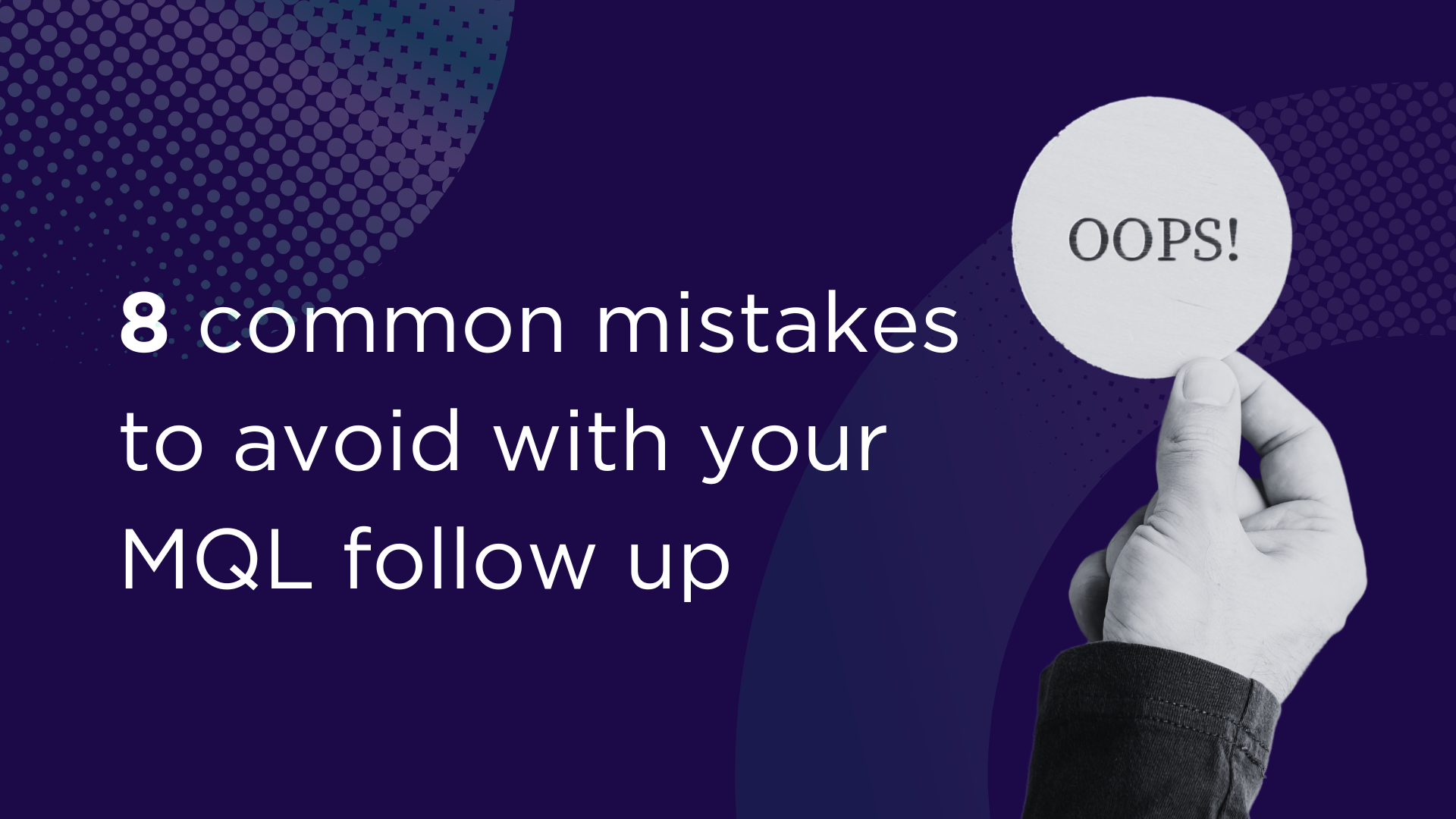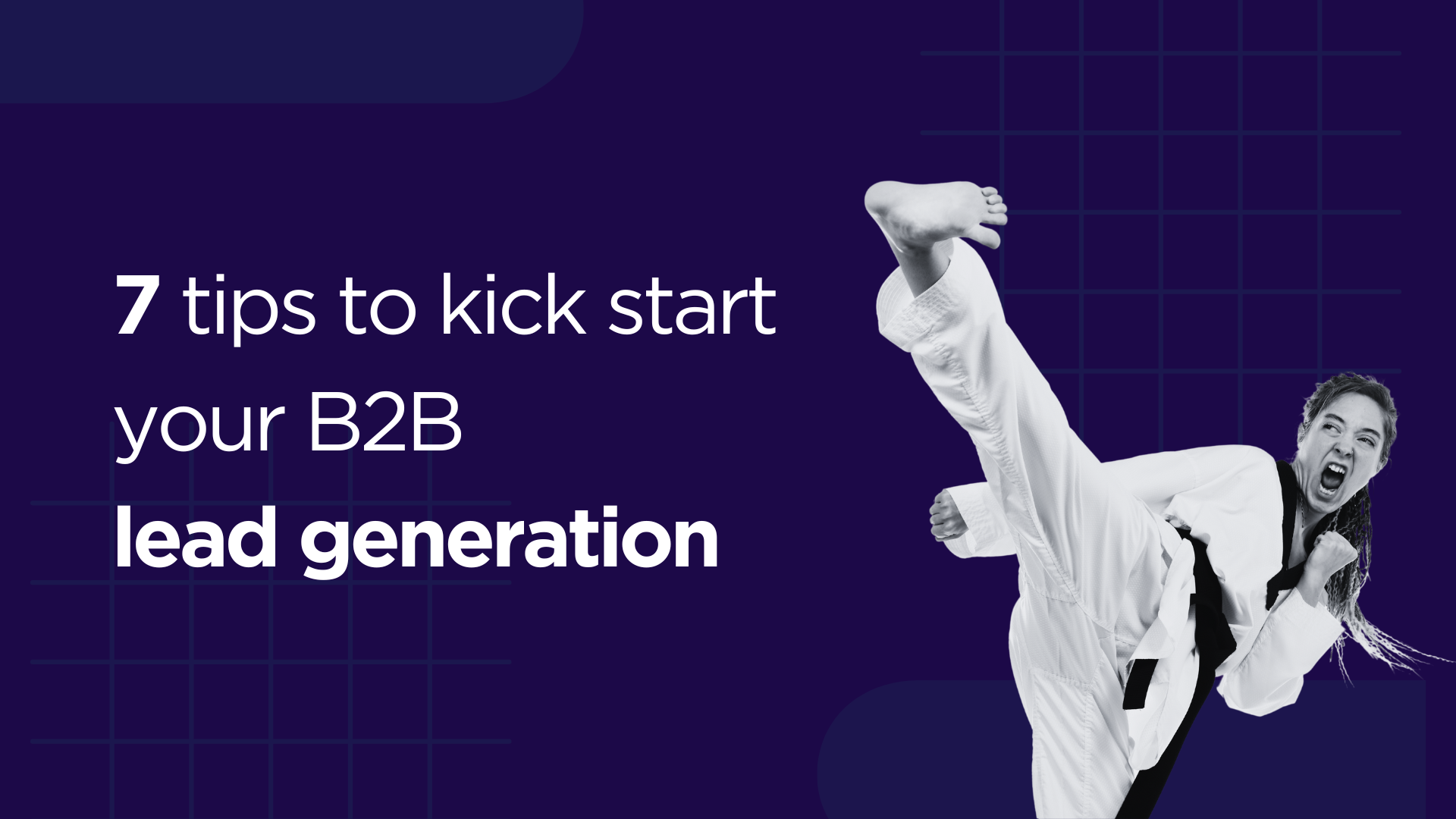Imagine being able to get involved in a buyer’s decision-making process from the very begining. And I mean the moment they recognise there’s a problem they need to solve.
For example, if I’ve got a problem within my work, the first thing I do is research on the internet to see if there are any tips, tools or advice out there that can help me solve that problem.
Inbound is a sales and marketing business methodology that attracts and engages customers by creating valuable, helpful content and website experiences that are tailored to them. It helps your audience by speaking directly to them when they’re already in their buyer journey.
Inbound content for your website is usually created at all stages of the buyer journey to help your desired audiences decide something they may already have been mulling over in their minds or learn more about a problem they’re actively looking to solve.
This is exactly why marketers invest such a huge amount of time and energy into their websites. But what happens to these leads once they’ve come through the site? The content has engaged them, they’ve taken the bait, but then how are they followed up?
First impressions count, and the first impression you make with inbound leads is how quickly you respond to their enquiry, because if you’re slow to respond now, how slow will you be down the line when they become a customer?
It’s also important to use the right approach to fit with the right stage in the buyer journey. For example, if someone has downloaded some very top of the funnel information that’s nothing to do with your services, you could put them off by going straight in with a sales message.
Unfortunately, businesses make mistakes like this when it comes to following up inbound leads, which hinders the effectiveness of their websites and essentially wastes the money they’ve invested in their website and content assets. Here are some of the most common ones.
1. Don’t take too long to follow-up
It’s much easier to progress your inbound leads when you follow them up as soon as they come in. If you wait until they’ve forgotten about you before getting in touch, you’ll have a much harder time turning them into sales. This leads to a huge amount of wasted cost, both in terms of the time spent creating marketing assets and chasing leads to get them back on board.
In fact, studies have shown that you’re 7 times more likely to connect with a lead if you call within the first 15 minutes of them submitting a form. What’s more, if you call a lead in the first 5 minutes after they’ve submitted a web form, they’re 100x more likely to get on the phone. — Xant
However, this can’t always be the case! Salespeople are usually busy doing what they do best – face to face selling, so often struggle to find the time to proactively drop everything to jump on a call to leads as soon as they submit a form.
In fact, the average time it takes companies to even attempt contact with their inbound leads is 46 hours 53 minutes, and 55% of people don’t respond to enquiries within 5 business days… now that’s not quite within 15 minutes, is it?
Over 93% of companies don’t follow up their inbound enquiries promptly, and this poor lead management has a direct impact on sales volume, as well as your bottom line.
2. Define the process
Another problem that businesses have when it comes to inbound leads is a lack of accountability and ownership.
As we talked a little about above, this can lead to no one picking up the phone or emailing the leads, or it could lead to the total opposite – too many people try to get in touch. This makes communications confusing due to the duplicate touchpoints, which can be quite irritating and off-putting to prospects.
We want the follow-up process to be as smooth as possible for our inbound leads, so it’s incredibly important that there’s accountability and ownership involved with your inbound lead follow up process.
3. Align sales and marketing teams
Ever noticed that when things go wrong for Marketing, it’s Sales’ fault, and when Sales has a problem, it’s Marketing that gets blamed? The (not-so-easy) fix for this is to align your sales and marketing teams and help them realise they have one goal.
By creating Inbound content to drive people into your CRM, you’re providing Sales not only with warmer leads to follow up, but context to spark a conversation too. But you’ll have to communicate the reasons behind these topics and make sure Sales are on the same page.
This way, when someone submits the form to download that piece of content you’ve created or filled out your contact us form on a certain landing page, Sales can talk about it within their communications to make it more personal and seamless.
But it’s not just marketing’s job to ensure the content gets used. Marketing has spent a long-time researching ideas and creating branded content to entice your ideal customer, so Sales need to use these pieces within their conversations!
It’s all about communication and working together to ensure a smooth follow-up for your inbound leads.
4. Don’t put all your eggs in one basket
Omnichannel experiences are key to optimising your conversion rate. Email and phone have been staples in inbound lead follow up for ages. Now, we’re adding chat and LinkedIn too. Each buyer is different, and you need to be ready to meet them where they prefer to be.
If you limit the channels of your follow up process, you’re going to be limiting your ability to communicate to buyers through the medium of their choice.
5. Don’t rest on your laurels
If anything, this past year has taught us that the market, your buyers, and technology are changing constantly, so your approach will have to keep up with that. Whatever was working last month may not be resonating with your buyers anymore.
That’s why you should always be testing your follow-up process. The same formula won’t work forever, so you’ll need to try out different messaging and channels.
6. Qualify your inbound leads
Just because someone has submitted a form for a download on your site, it doesn’t mean they’re automatically your ideal customers. Much to Marketing’s dismay, there will be people out there who don’t fit into your ideal buyer persona.
Perhaps they were just scoping out the competition, or maybe they have no budget. You need to still do a little bit of qualification for these inbound leads so you’re not wasting time following up people who can’t or won’t buy from you. So, make sure you at least do a quick Google search to check the business out and see if they fit within your ideal target market.
7. Use personalisation
TOF, MOF, and BOF content aren’t just acronyms made up by Marketing because they like funny buzzwords. These different types of content are created with the buyer journey in mind. TOF is top of the funnel, this might be a blog with helpful tips; MOF could be a downloadable piece of content like a whitepaper to give the reader more information, and BOF could be a brochure.
Look at the type of content your lead converted on, this will give you a good idea on their intent. If your prospect converted on a top of the funnel piece of content, they’re likely still in their research stage and may need a little more nurturing before you go in with the sales pitch. If they downloaded a brochure or pricing guide, they’re likely much closer to a sale.
It’s also worth asking how long this lead has been in your system, if they’ve interacted with any offer content, how they were referred to your website, and any other communications your company might have had with them previously (if any!). This will help you be more personal in your communications, which has proven time and again to have a positive effect on bottom lines.
8. Don’t give up after just one follow-up attempt
Even inbound leads need convincing sometimes, but they often end up getting tossed aside and forgotten about after one or two attempts. In fact, the average number of optimal touchpoints for inbound leads still rests at about 7-10 touchpoints. They’ve already shown an interest in your business, so It’s important to assign the resource and time to following up and touching base with these leads— exactly as you would for outbound leads.
That being said, it’s incredibly important to keep testing this to see what works best for your business.
Final thoughts
Companies are spending money on their inbound content and as a result, getting more inbound leads as buyers take more control of their sales journey. This has resulted in lots more activity across all stages of the buyer journey that need handling correctly — meaning more time spent following up.
The obvious answer to this (albeit very nice) issue is to have all leads go through to the sales team. However, It doesn’t take long for a salesperson to get disillusioned with inbound leads if they perceive the leads to be more top of the funnel. This then results in all those leads being given a low priority and not followed up in the way that they need to be.
Having lots of engagements coming into a company may also, understandably, result in “cherry-picking” — whoever is responsible for lead follow-up ends up scanning the leads once a day and chooses the ‘best ones’ to go after. This has two issues:
- All leads are left until the end of the day missing out on the benefits of a speedy follow-up.
- Some good leads that aren’t considered to be good at first glance will be forgotten about completely or only followed up by electronic methods and never qualified.
Neither of these are good for sales, but perfectly understandable in a busy department.
Outsourcing inbound follow-up as a service
You can pass over any enquiries or chat conversations you’d like to receive effective follow-up to an outsourced lead generation company like Shortlist. We guarantee that leads will be followed up within 15 minutes. Quality leads will get passed to your sales team, and all others get put into your pipeline or discounted so you can test the quality of your lead generation activities.
All of these will be entered into HubSpot — our CRM system, where we will begin the communication process. We have pre-defined and written workflows that could include telephone calls, 1-2-1 emails, content and LinkedIn messaging etc.
Our team will continue communicating with them until we have fully qualified opportunities, rejected the lead or pipelined them in line with their future requirements.
Want to learn more about our inbound follow up service? Get in touch!



